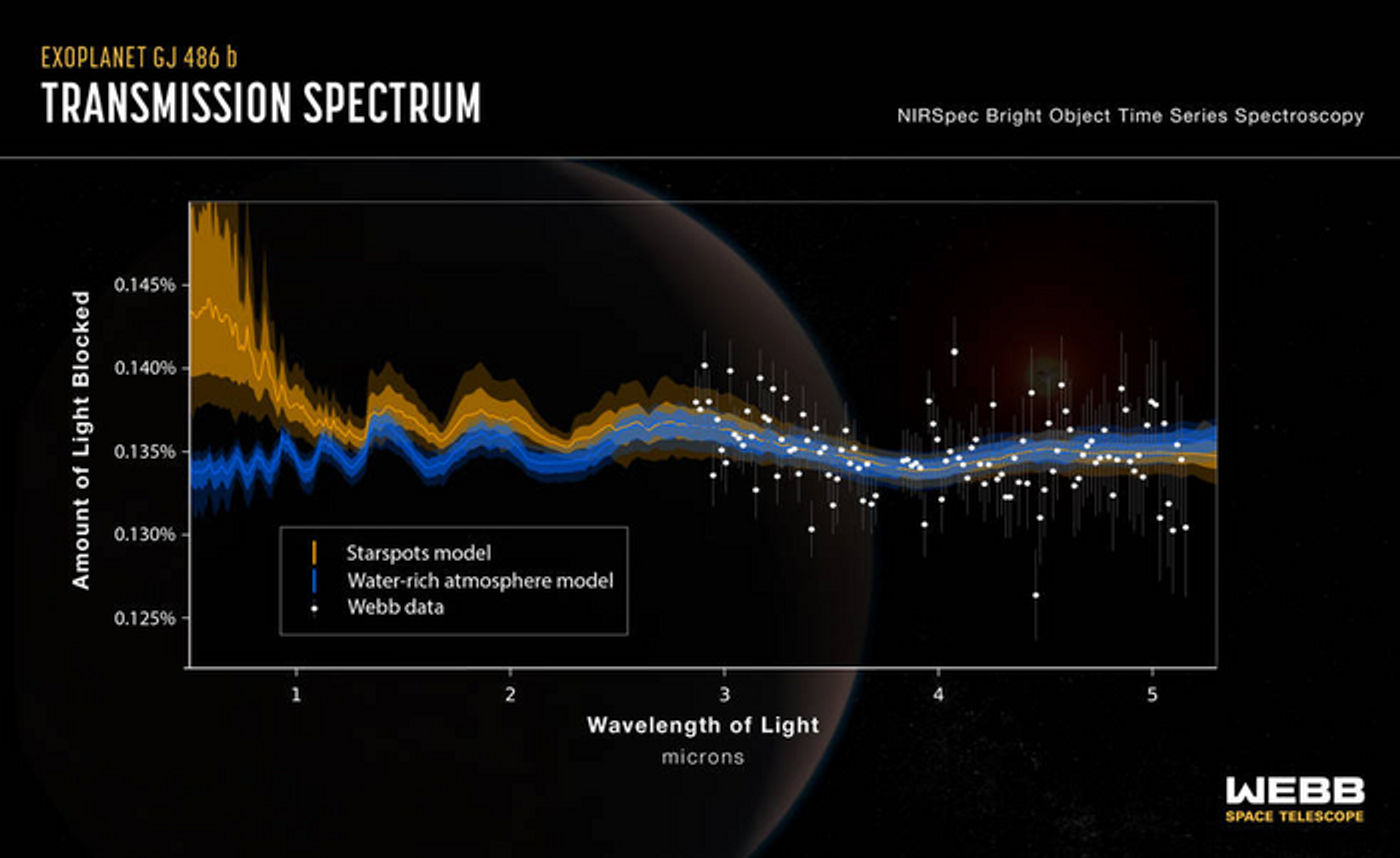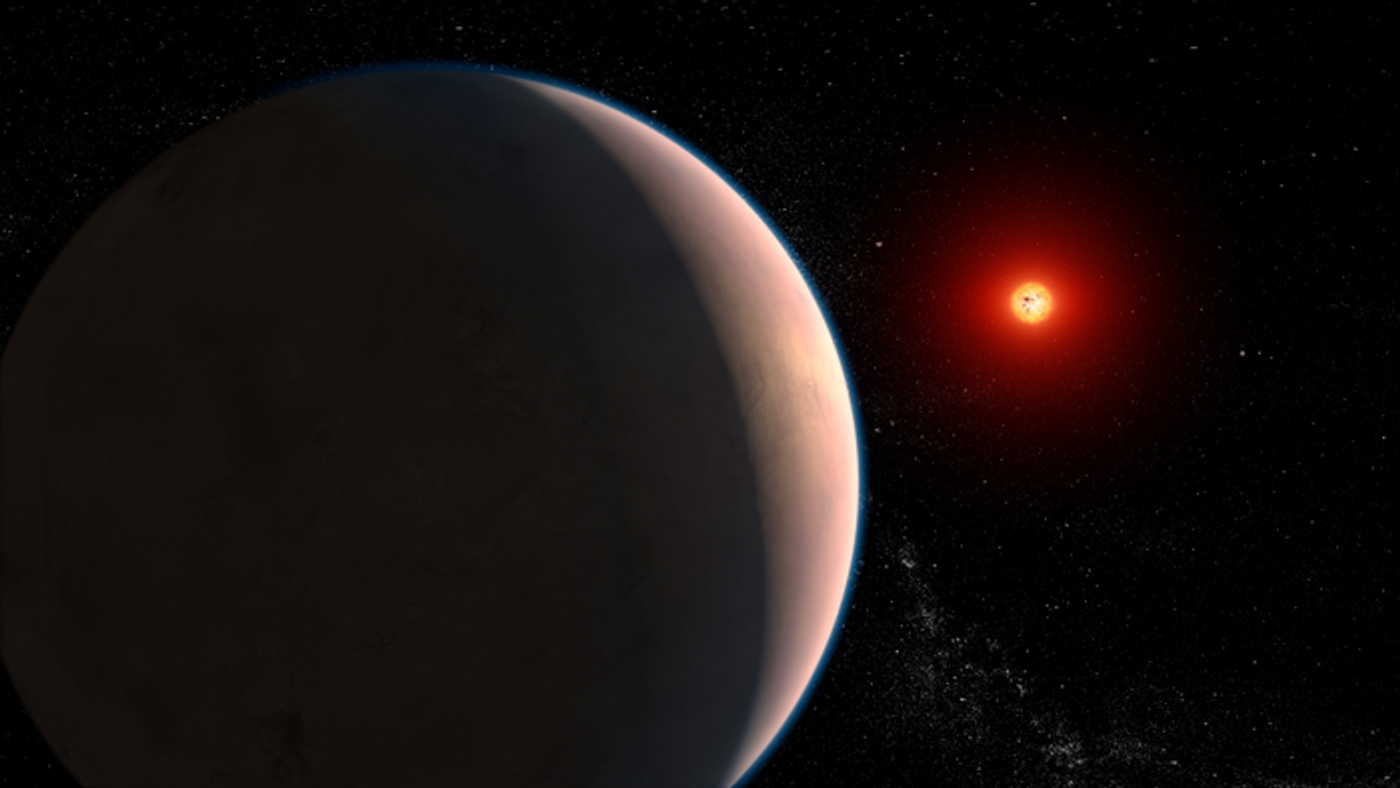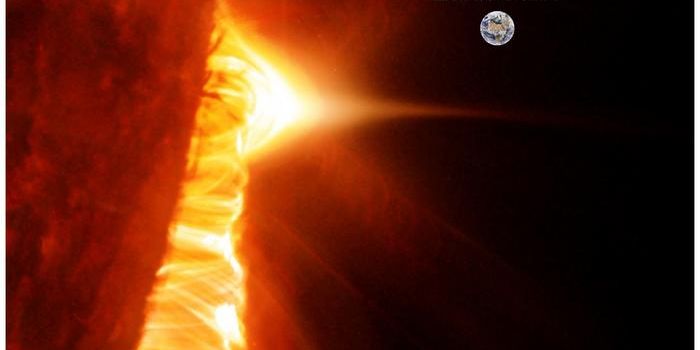Water Vapor from Exoplanet Atmosphere or Starspots? Scientists Scratching Their Heads.
A recent study accepted to The Astrophysical Journal Letters discusses data from NASA’s James Webb Space Telescope (JWST) that indicates traces of water vapor from the exoplanetary system, GJ 486, but scientists are still unclear if the source of the water vapor is from the atmosphere of the exoplanet, GJ 486 b, or its host star, GJ 486, as the data is currently inconclusive. What’s even more puzzling is the host star is a red dwarf, meaning it’s very active and emitting large amounts of X-ray and ultraviolet radiation, which would make the plausibility of its exoplanet incapable of supporting a water-rich atmosphere.
JWST data that matches with computer models from starspots and a water-rich atmosphere. (Credit: NASA, ESA, CSA, Joseph Olmsted (STScI))
Artist illustration of GJ 486 b. (Credit: NASA, ESA, CSA, Joseph Olmsted (STScI))
“We see a signal, and it’s almost certainly due to water. But we can't tell yet if that water is part of the planet's atmosphere, meaning the planet has an atmosphere, or if we’re just seeing a water signature coming from the star,” said Dr. Sarah Moran, who is a postdoctoral researcher at the University of Arizona, and lead author of the study.
Based on its size, GJ 486 b has been determined to be a rocky world with higher gravity than Earth given it’s three times as massive. Along with its gravity, its orbital characteristics also differ from Earth’s, as it orbits its host star in just 1.5 days and is believed to be tidally locked, meaning one side always faces its star. This also means the exoplanet does not lie within its star's habitable zone, which is the sweetspot where liquid water could exist.
For the study, the researchers were able to examine GJ 486 b using the transit method, meaning the exoplanet crosses in front of its parent star from our vantage point. When this happens, scientists can examine the exoplanet’s atmosphere to hopefully determine its composition. After observing some transits and analyzing the data, they determined they had found signals of water vapor, they were unable to determine if the source is from the exoplanet or the host star.
“We didn't observe evidence of the planet crossing any starspots during the transits. But that doesn't mean that there aren't spots elsewhere on the star. And that's exactly the physical scenario that would imprint this water signal into the data and could wind up looking like a planetary atmosphere,” said Dr. Ryan MacDonald, who is a NASA Sagan Fellow at the University of Michigan in Ann Arbor, and a co-author on the study.
Going forward, the researchers plan to gather more data using several instruments onboard JWST to hopefully pinpoint the source of the water vapor.
Sources: The Astrophysical Journal Letters, NASA
As always, keep doing science & keep looking up!










